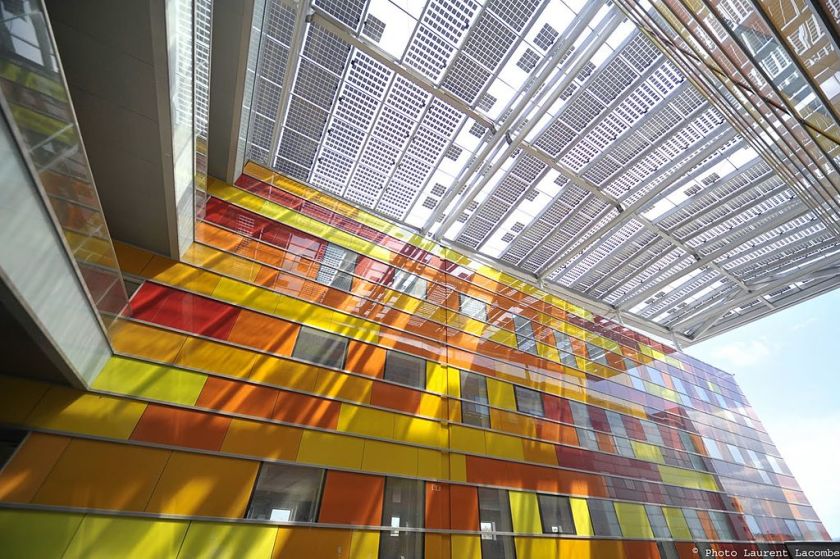Alliance Building Integrated Photovoltaics: Björn Rau joins Management Board

Semi transparent PV-elements in the train station in Perpignan, France. © CC 3.0/Issolsa
The General Meeting of Alliance for Builiding Integrated Photovoltaics (BIPV) has unanimously elected physicist and photovoltaic expert Dr. Björn Rau, Helmholtz-Zentrum Berlin, to the BIPV Management Board.
Dr. Björn Rau is Deputy Director of PVcomB at the HZB and has been involved in Alliance BIPV since mid-2016. He already heads the research group of Alliance BIPV and accepted the nomination to stand for election to the Board at the recent General Meeting. In his nomination speech, he emphasised the variety of research expertise found within the circle of members: “Not everyone is aware yet of what each of us is working on. We have an opportunity to expand the transfer of knowledge.” By means of an active exchange, he would like above all to promote practical cooperation between the members and build bridges between the various players in the BIPV sector.
The general meeting elected Rau as well as six other candidates as new Board Members.
More information: Allianz BIPV e.V. was founded as a registered association in April 2016. Its goal is to lead integrated photovoltaics in buildings from being a niche application into broad employment. Integrated solar systems should become a normal component of buildings. Renowned manufacturers, research institutions, architects, planners, and consultants are involved in the Alliance BIPV.
www.allianz-bipv.org
red.
https://www.helmholtz-berlin.de/pubbin/news_seite?nid=14837;sprache=en
- Copy link
-
The twisted nanotubes that tell a story
In collaboration with scientists in Germany, EPFL researchers have demonstrated that the spiral geometry of tiny, twisted magnetic tubes can be leveraged to transmit data based on quasiparticles called magnons, rather than electrons.
-
Bright prospects for tin perovskite solar cells
Perovskite solar cells are widely regarded as the next generation photovoltaic technology. However, they are not yet stable enough in the long term for widespread commercial use. One reason for this is migrating ions, which cause degradation of the semiconducting material over time. A team from HZB and the University of Potsdam has now investigated the ion density in four different, widely used perovskite compounds and discovered significant differences. Tin perovskite semiconductors produced with an alternative solvent had a particular low ion density — only one tenth that of lead perovskite semiconductors. This suggests that tin-based perovskites could be used to make solar cells that are not only really environmentally friendly but also very stable.
-
Synchrotron radiation sources: toolboxes for quantum technologies
Synchrotron radiation sources generate highly brilliant light pulses, ranging from infrared to hard X-rays, which can be used to gain deep insights into complex materials. An international team has now published an overview on synchrotron methods for the further development of quantum materials and technologies in the journal Advanced Functional Materials: Using concrete examples, they show how these unique tools can help to unlock the potential of quantum technologies such as quantum computing, overcome production barriers and pave the way for future breakthroughs.
